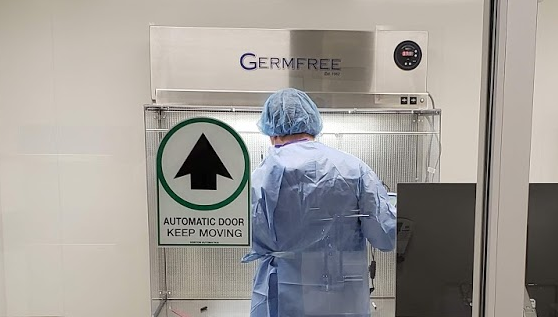COVID-19 has taught us many things, among them that our healthcare supply chain is poorly designed and flimsy. Just a few weeks into the pandemic and our supply chain for Personal Protective Equipment (PPE) has been completely disrupted. PPE is now in short supply, and I suspect that we will run out of PPE in just a few weeks if things continue on their current trajectory.

Are we using more PPE because of COVID-19? Of course! But we are unable to spin up production because a vast majority of the products we need are not made in the United States and the world is in lock down. An industry that is literally designed to provide care to others and save lives has no supply chain redundancy, no failover strategy for shortages, and no geographical diversity for equipment and supplies.
Any pharmacy that compounds sterile medications – intravenous antibiotics, for example – is required to wear a lot of PPE. Guidelines have lead to staff being required to wear a clean, low-lint gown, bouffant (head cover), mask, shoe covers, and sterile gloves when entering the buffer area of a pharmacy cleanroom; I also have to wear a beard cover, but most do not.
When leaving the area, a vast majority of the aforementioned PPE gets tossed, i.e. wasted. Up until about a week ago, much of the PPE worn by pharmacy personnel could not be reused. Now, because of the pandemic, regulatory agencies are lifting these restrictions. It’s an interesting shift in thinking.
In general – in theory? – the use of PPE during sterile compounding is designed to decrease risk of introducing bioburden into process. I suppose that makes sense. Unfortunately, the risk has never been quantified to any appreciable manner. There are no before and after statistics to determine whether or not strict adherence to PPE guidelines has done anything to improve sterile compounding safety, or lesson the risk of contamination. One thing is does, however, is generate a ton of waste and increase the cost of sterile compounding significantly .(1)
Current garbing practices are basically at the whim of groups like the United States Pharmacopeia (USP). The process by which USP creates these guidelines is not at all transparent. We have no idea what thought and/or research goes into their recommendations. Unfortunately, USP guidelines are frequently – almost universally – adopted in whole or part by other regulatory agencies like Boards of Pharmacy, Departments of Public Health, The Joint Commission (TJC), and so on. Few ever question the decisions because everyone is too busy trying to follow the rules and take care of patients to fight it.(2)
Over the past couple of weeks, organizations and regulatory agencies have been pulling back on the requirements for sterile compounding PPE, due in no small part to the disruption in the supply chain caused by COVID-19. It’s an evolving situation.
As we move through this crisis, I recommend the following:
- Review your current PPE practices. Some folks are doing way more than is required. While noble on the surface, doing so is adding to the shortage and not necessarily benefiting anyone. Â A prime example is pharmacies that use full PPE in anterooms.
- Re-use PPE when allowed. See most recent USP recommendations here.
- Do not place re-used PPE in plastic bags for safekeeping. I saw this recommendation somewhere and it makes no sense to me. People perspire in PPE, and zipping it up in a bag is akin to a makeshift incubator.
- Sign up for USP, TJC, and local Board of Pharmacy email communications. Things are changing rapidly, at least they have been here in California. We’ve had to make several adjustments over the past 7-10 days, and I expect we’ll have to make even more in the coming weeks. It’s going to get weird.
- Use common sense. Folks, pharmacists are highly trained, specialized professionals. Now is not the time to be averse to making judgement calls. It’s why we spent all those years in school and get paid the big bucks. Use your head. Be smart but be flexible.
———–
- It is not uncommon for large hospital pharmacies with busy cleanrooms to spend more than $10K per month on disposable PPE. Think about that the next time a hospital administrator complains about spending $3K on a “non-formulary†course of therapy
- Recently, a group successfully blocked the publication of new USP <797> guidelines. One of the reasons the group went after USP was due to lack of transparency in their process and failure to provide information when comments and requests were ignored.
